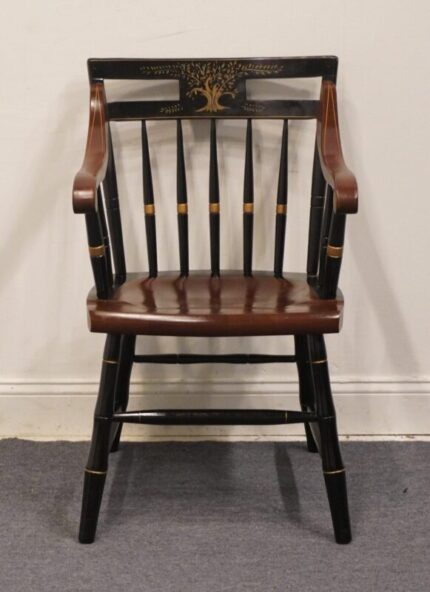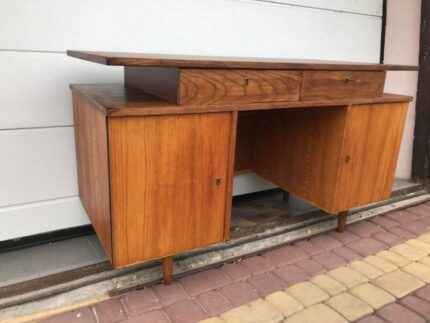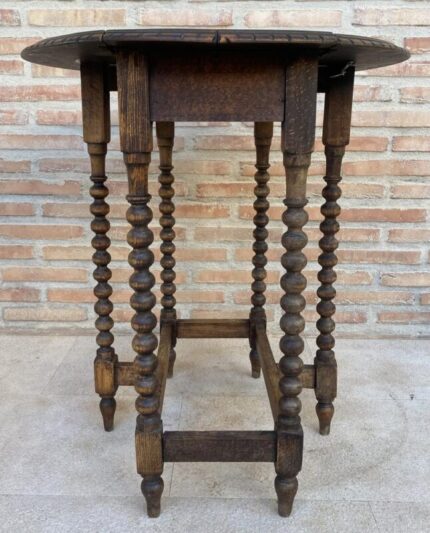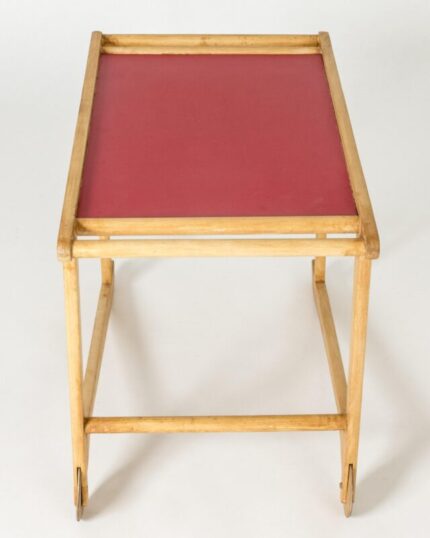Vintage Design
The relationship between the different shapes ensures a balanced composition. The careful alignment and proportions create an equilibrium, giving a sense of coherent design. Both tension and harmony create a unity. The piece embodies minimalist design principles, characterized by a clear shape and simplified form with subtle detailing. It is reduced to the minimum. Compared to most minimalist design of the last 30 years, which is just a superficial attitude, here we can see that it is seeking something essential in an unspoiled way. The surfaces of the seats are done in cane. Contrasting the massive wooden parts, which frame it nicely, cane expresses a lightness with its transparency. The geometrical patterns of the canework create a charming shadowscape. We do the caning like it was done in Chandigarh. We use durable and thicker cane. All massive wood parts are authentic. They are done in Indian teak. Rich in texture, the wood is vivid and comes in cognac colour. The surface is treated with shellac and there are several layers of original shellac. It provides smooth irregular gloss different from that of the sterile lacquerware nowadays. The frames of the seat and the backrest are shaped so their facing surfaces are ‘slit’ at an angle, which allows the chair to be foldable for transport. The item is engraved on the side with lettering, which makes it more valuable. I think the piece blends well with many interior styles. It can support pure, modern aesthetics by giving them a warmer character with its natural materials and warm colours. As an easy chair with a strong character, it fits in a living area or in a reading corner. It introduces a serene atmosphere. P! Galerie’s selection is mainly focused on rare French mid-century modern design artefacts by Pierre Jeanneret, Jean Prouvé, Le Corbusier, and Charlotte Perriand. Artefacts from our carefully curated collection are handpicked, and all traces and important indicators of authenticity are evaluated professionally. We try to preserve as much of patina as possible during the process of restoration, as it defines these historic pieces. Each object comes with a certificate of authenticity, offering you the opportunity to own a valuable artefact originating from a UNESCO-designated World Heritage Site. Not only do we cooperate with museums and offer auction houses our services and expert opinion, we also look forward to welcoming you as a private collector and connoisseur. Literature: Eric Touchaleaume and Gerald Moreau, ‘Le Corbusier, Pierre Jeanneret: The Indian Adventure, Design-Art-Architecture’ (Paris: Gourcuff Gradenigo, 2011), 571.
| Creator |
Pierre Jeanneret (Designer) |
|---|---|
| Manufacturer |
Pierre Jeanneret (Designer) |
| Design Period | 1960 to 1969 |
| Year | 1960 |
| Production Period | 1960 to 1969 |
| Country of Manufacture | India |
| Identifying Marks | This piece has an attribution mark |
| Style | Vintage |
| Detailed Condition | |
| Restoration and Damage Details |
Light wear consistent with age and use, Patina consistent with age and use, Completely restored, Surface has been refinished, Cane redone according to the original technique.
|
| Product Code | BDC-1972285 |
| Materials | Teak, Cane |
| Color | Brown, charcoal |
| Width |
51 cm 19.9 inch |
| Depth |
72 cm 28.3 inch |
| Height |
77 cm 30.3 inch |
| Weight Range | Standard — Between 40kg and 80kg |
| Duties Notice | Import duty is not included in the prices you see online. You may have to pay import duties upon receipt of your order. |














































Reviews
There are no reviews yet.